
MICROSYSTEM TECHNOLOGIES-MICRO-AND NANOSYSTEMS-INFORMATION STORAGE AND PROCESSING SYSTEMS
Scope & Guideline
Fostering collaboration in the evolving landscape of microsystems.
Introduction
Aims and Scopes
- Micro and Nano Fabrication Techniques:
Research on various fabrication methods for micro and nanoscale devices, including lithography, etching, and 3D printing, aimed at improving device performance and functionality. - Sensors and Actuators:
Development and analysis of micro and nanoscale sensors and actuators with applications in biomedical, environmental monitoring, and industrial automation, focusing on sensitivity, accuracy, and integration. - Energy Harvesting and Management:
Innovations in energy harvesting technologies, including piezoelectric, thermoelectric, and electromagnetic systems, aimed at powering microsystems sustainably and efficiently. - MEMS/NEMS Technologies:
Exploration of Microelectromechanical Systems (MEMS) and Nanoelectromechanical Systems (NEMS) for applications in sensing, actuation, and signal processing, emphasizing design, modeling, and performance evaluation. - Materials for Micro/Nanosystems:
Investigation of novel materials, including nanocomposites and 2D materials, for their application in enhancing the performance and functionality of micro and nanosystems. - Biomedical Applications:
Application of micro and nanoscale technologies in healthcare, including diagnostics, drug delivery systems, and wearable health monitoring devices. - Data Storage and Processing Systems:
Research on micro and nanoscale technologies in the realm of data storage and processing, focusing on improving efficiency, capacity, and speed of information systems.
Trending and Emerging
- Advanced Nanomaterials:
Research on novel nanomaterials, including graphene and transition metal dichalcogenides, is on the rise, emphasizing their unique properties and applications in various microsystems. - Smart Sensors and IoT Integration:
There is an increasing focus on smart sensors that integrate with the Internet of Things (IoT), enabling real-time data collection and analysis for applications in smart cities, healthcare, and environmental monitoring. - Artificial Intelligence in Microsystems:
The integration of artificial intelligence and machine learning techniques in microsystems is gaining prominence, particularly in enhancing sensor capabilities and data processing efficiency. - Energy-Efficient Systems:
Research on energy-efficient and sustainable microsystems technologies is trending, particularly in the context of renewable energy harvesting and management. - Flexible and Wearable Technologies:
The development of flexible and wearable microsystems is emerging as a significant research area, with applications in health monitoring, fitness tracking, and smart textiles. - Microfluidics and Lab-on-a-Chip Systems:
There is a growing interest in microfluidics and lab-on-a-chip technologies for biomedical applications, focusing on diagnostic tools and drug delivery systems.
Declining or Waning
- Classic Semiconductor Devices:
Research on traditional semiconductor devices, such as bipolar junction transistors and simple MOSFETs, has seen a decline as the focus shifts towards more advanced materials and devices that leverage nanotechnology. - Analog Circuit Design:
There appears to be a waning interest in basic analog circuit design topics, particularly those that do not integrate modern advancements in micro and nanoscale technologies. - Conventional Energy Systems:
Research on conventional energy systems, such as fossil fuel-based systems, is gradually decreasing in favor of studies focused on renewable energy technologies and sustainable practices. - Basic Robotics and Automation:
While robotics remains a core area, the focus has shifted away from basic robotic systems towards more complex and integrated approaches that utilize AI and machine learning. - Traditional Imaging Techniques:
There is a noticeable reduction in research related to traditional imaging techniques, as the field moves towards more sophisticated imaging methods that leverage nanotechnology and advanced materials.
Similar Journals

BULLETIN OF MATERIALS SCIENCE
Connecting Researchers to the Pulse of Materials ScienceBulletin of Materials Science, published by the Indian Academy of Sciences, is a distinguished journal that has been contributing to the field of materials science since its inception in 1979. With an ISSN of 0250-4707 and E-ISSN 0973-7669, it provides a platform for researchers to share groundbreaking studies and advancements in the mechanics of materials and general materials science. As of 2023, the journal holds a respectable Q3 ranking in both the Materials Science (miscellaneous) and Mechanics of Materials categories, highlighting its competitive position in the academic landscape. Although the journal currently does not operate under an open access model, it remains a vital resource for professionals and students keen on exploring innovative material developments and methodologies. With a commitment to promoting high-quality research, the Bulletin of Materials Science features rigorous peer-review processes, making it an essential reference for anyone engaged in the materials science domain.

Nanotechnology and Precision Engineering
Catalyzing innovation through open access scholarship.Nanotechnology and Precision Engineering is a leading open access journal published by AIP Publishing, dedicated to advancing the fields of nanotechnology and precision engineering. Established in 2006, the journal has become a vital resource for researchers, professionals, and students, reflecting the latest advancements in Electrical and Electronic Engineering, Industrial and Manufacturing Engineering, Instrumentation, Mechanical Engineering, and Nanoscience. With an impressive variety of quartile rankings in Scopus—notably Q1 in several key engineering domains—the journal provides a robust platform for disseminating groundbreaking research. Noteworthy aspects include its open access format introduced in 2018, ensuring that high-quality research is freely accessible to a global audience. By maintaining a commitment to excellence and collaboration, Nanotechnology and Precision Engineering plays a crucial role in shaping the future of technology and innovation.
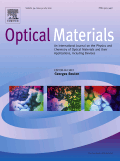
OPTICAL MATERIALS
Shaping the Landscape of Optical EngineeringOPTICAL MATERIALS is a peer-reviewed journal published by Elsevier, focusing on the intricate field of optical materials within various scientific domains including atomic and molecular physics, electronic engineering, and chemistry. With an impact factor indicative of its relevance, it ranks in the Q2 category across multiple areas such as Electrical and Electronic Engineering, and Inorganic Chemistry, highlighting its critical position in advancing research and innovation. Established in 1992 and continuing its contribution until 2024, this journal serves as a vital resource for researchers and professionals aiming to disseminate significant findings in material sciences, particularly those related to optical properties and applications. While it does not offer open access, the journal remains essential for academia and industry alike, ensuring the continued exchange of valuable knowledge in this rapidly evolving field.

Micro & Nano Letters
Advancing micro and nanoscale innovation.Micro & Nano Letters is a prominent open-access journal published by WILEY, dedicated to advancing the fields of micro and nanoscale science and technology. Since its inception in 2007, the journal has been a valuable resource for researchers, professionals, and students, delivering high-quality research that supports innovation and collaboration in bioengineering, biomedical engineering, condensed matter physics, materials science, and nanoscience. With an impact factor that reflects its growing influence, Micro & Nano Letters has earned recognition in various Scopus categories, including a Q3 ranking in both Condensed Matter Physics and Materials Science as of 2023. Its commitment to open access, established in 2021, ensures that the latest developments in micro- and nanotechnologies are accessible to a global audience, fostering a multidisciplinary dialogue across academia and industry. The journal continues to play a critical role in disseminating cutting-edge research and promoting technological advancements worldwide.

Advanced Fiber Materials
Fostering Innovation in Optical and Magnetic MaterialsAdvanced Fiber Materials, published by SpringerNature, stands at the forefront of research in the realms of materials science, polymers, and optical and magnetic materials. With an ambitious scope that spans from 2019 to 2024, this journal is dedicated to disseminating cutting-edge findings and innovative applications in the field of advanced fibrous materials. It enjoys a prestigious status, classified in the Q1 quartile across several categories, including Electronic, Optical and Magnetic Materials and Materials Chemistry, showcasing its influence and relevance within the academic community. The journal's impressive rankings in Scopus highlight its significant contributions to the disciplines of Polymers and Plastics, as well as various aspects of Materials Science, consistently placing it among the top-tier publications in these fields. By encouraging open discourse among researchers, professionals, and students, Advanced Fiber Materials plays a crucial role in advancing knowledge and fostering innovation in material design and application.
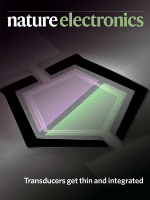
Nature Electronics
Connecting Ideas, Advancing TechnologiesNature Electronics is a premier journal in the field of Electrical and Electronic Engineering, published by NATURE PORTFOLIO. Established in 2018 and converging until 2024, it has swiftly positioned itself as a leading platform for groundbreaking research, holding a prestigious Q1 ranking in multiple categories including Electronic, Optical and Magnetic Materials, and Instrumentation according to the latest 2023 evaluations. The journal boasts an impressive Scopus ranking, securing the top position in Instrumentation and showcasing exceptional standings in both Electrical Engineering and Materials Science. With a commitment to disseminating high-quality research, Nature Electronics offers insightful access to the latest innovations and advancements in the electronics domain, making it an essential resource for researchers, professionals, and students alike. Engaging with this journal enables readers to stay at the forefront of technological progress and fosters discussion on the future of electronic materials and devices.
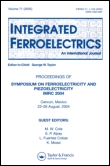
INTEGRATED FERROELECTRICS
Fostering Collaboration in Ferroelectric AdvancementsINTEGRATED FERROELECTRICS is a prominent academic journal published by Taylor & Francis Ltd, focusing on the interdisciplinary study of ferroelectric materials and their applications. Since its inception in 1992, it has provided a platform for high-quality research and innovative findings within fields such as ceramics and composites, condensed matter physics, and electrical engineering. Despite currently holding a Q4 quartile ranking across several categories—including Ceramics and Composites and Electrical and Electronic Engineering—the journal plays a crucial role in disseminating knowledge and fostering collaboration among scientists and engineers dedicated to advancing ferroelectric technology. With an increasing emphasis on the practical applications of electronic and optical materials, INTEGRATED FERROELECTRICS offers valuable insights for researchers, providing them with a repository of knowledge that is essential for both academic exploration and practical implementation.
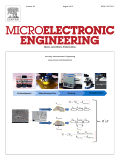
MICROELECTRONIC ENGINEERING
Exploring the Intersection of Physics and Engineering in MicroelectronicsMICROELECTRONIC ENGINEERING is an esteemed journal published by Elsevier, focusing on the rapidly evolving fields of microelectronics and nanotechnology. It encompasses a wide array of topics, including atomic and molecular physics, condensed matter physics, and the engineering aspects of electronic, optical, and magnetic materials. With its impressive impact factor and recognition as a Q2 journal in several categories, it provides an invaluable platform for researchers and professionals to disseminate their groundbreaking findings. The journal has been instrumental in advancing our understanding and application of microelectronic technologies since its inception in 1983. Currently ranked highly within various specialized categories in Scopus, MICROELECTRONIC ENGINEERING offers targeted access to cutting-edge research, fostering innovation and collaboration in the world of electronic engineering and materials science. As we look towards the future, with convergence continuing to shape research until 2024, the journal remains a critical resource for those dedicated to pushing the boundaries of knowledge in these dynamic fields.
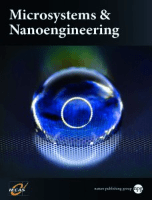
Microsystems & Nanoengineering
Driving Innovation Through Cutting-Edge ResearchMicrosystems & Nanoengineering, published by SpringerNature, stands at the forefront of advancing knowledge in the fields of atomic and molecular physics, condensed matter physics, electrical and electronic engineering, and materials science. With an impressive impact factor and categorized in Q1 across multiple prestigious fields in 2023, this journal not only provides a platform for high-quality research but also reflects the vitality of innovations within these disciplines. Since its transition to Open Access in 2015, it has significantly broadened accessibility for researchers, professionals, and students globally, facilitating the dissemination of groundbreaking findings. Addressed in the United Kingdom, with a focus on interdisciplinary collaboration, Microsystems & Nanoengineering aims to foster connections between theoretical advancements and practical applications, serving as a crucial resource for those engaged in cutting-edge nanoscale technologies and microsystems development. Immerse yourself in the latest studies and engage with the vibrant community that shapes the future of science and engineering.

Microfluidics and Nanofluidics
Advancing the Frontiers of Micro and NanotechnologyMicrofluidics and Nanofluidics is a distinguished academic journal published by Springer Heidelberg, focusing on the rapidly evolving fields of micro and nanotechnology. With a commitment to disseminating cutting-edge research, this peer-reviewed journal aims to bridge the gap between fundamental science and practical application within Condensed Matter Physics, Materials Chemistry, and Nanoscience and Nanotechnology. It holds an influential position in its field, reflected by its Category Quartiles (Q3) and notable Scopus Rankings, including a ranking of #145 in Condensed Matter Physics. Researchers, professionals, and students will find this journal to be an invaluable resource for accessing pioneering studies, methodologies, and innovative technologies essential for advancing knowledge and applications in micro and nanofluidics. With an extensive history from 2004 to 2024, Microfluidics and Nanofluidics continues to foster discussion and collaboration within the scientific community, solidifying its role as a leading platform for scholarly communication in this dynamic discipline.